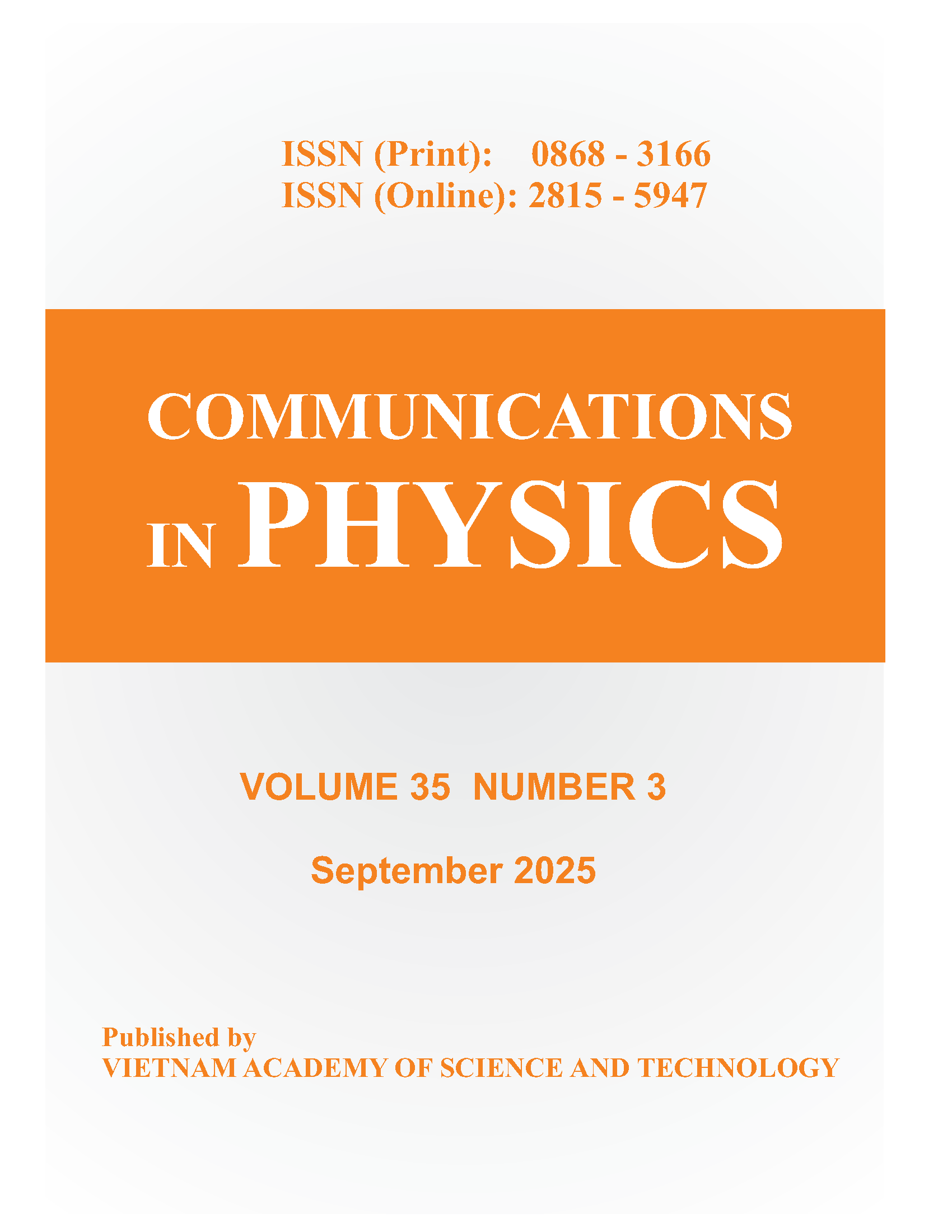Aggregation of Zoospores on Sharklet Microtopographic Surfaces
Author affiliations
DOI:
https://doi.org/10.15625/0868-3166/15668Keywords:
biofouling, aggregation, extended SEA model, Monte Carlo simulationAbstract
Surfaces with engineered microtopographies are potential candidate against biofouling to replace the use of biocides in the marine environment. Understanding the antifouling mechanism of microtopographic surfaces against marine microorganisms, however, has been limited. In this work, we theoretically studied the aggregation of Ulva linza zoospores on the Sharklet topographic surfaces by employing the extended Surface Energetic Attachment (SEA) model proposed
in a previous work. The energy parameters of the model were obtained by matching theoretical results with experimental data for one type of Sharklet surface. Monte Carlo simulations were then carried out for a series of Sharklet surfaces with various numbers of distinct features. In
agreement with prior experimental results, our simulations indicate that engineered topographies promote smaller aggregates than those on a smooth surface. Furthermore, we show that the maximum effect of the Sharklet topography on the aggregate size of U. linza can be obtained with just 3 distinct features.
Downloads
References
C. M. Magin, S. P. Cooper and A. B. Brennan, Materials Today 13 (2010) 36–44.
A. J. Scardino and R. de Nys, Biofouling 27 (2011) 73–86.
C. M. Kirschner and A. B. Brennan, Annu. Rev. Mater. Res. 42 (2012) 211–229.
A. Lindholdt, K. Dam-Johansen, S. Olsen, D. M. Yebra and S. Kiil, J. Coat. Technol. Res. 12 (2015) 415–444.
D. M. Yebra, S. Kiil and K. Dam-Johansen, Prog. Org. Coat. 50 (2004) 75–104.
K. V. Thomas and S. Brooks, Biofouling 26 (2010) 73–88.
M. L. Carman, T. G. Estes, A. W. Feinberg, J. F. Schumacher, W. Wilkerson, L. H. Wilson, M. E. Callow, J. A. Callow and A. B. Brennan, Biofouling 22 (2006) 11–21.
M. E. Callow, A. R. Jennings, A. Brennan, C. Seegert, A. Gibson, L. Wilson, A. Feinberg, R. Baney and J. Callow, Biofouling 18 (2002) 229–236.
A. Scardino, E. Harvey and R. De Nys, Biofouling 22 (2006) 55–60.
A. Scardino, J. Guenther and R. De Nys, Biofouling 24 (2008) 45–53.
C. J. Long, J. A. Finlay, M. E. Callow, J. A. Callow and A. B. Brennan, Biofouling 26 (2010) 941–952.
R. N. Wenzel, Ind. Eng. Chem. 28 (1936) 988–994.
A. Cassie and S. Baxter, Trans. Faraday Soc. 40 (1944) 546–551.
J. T. Decker, C. M. Kirschner, C. J. Long, J. A. Finlay, M. E. Callow, J. A. Callow and A. B. Brennan, Langmuir 29 (2013) 13023–13030.
T. X. Hoang, H. T. Mai, A. B. Brennan and L. Le, Biofouling 35 (2019) 684–695.
S. Katharios-Lanwermeyer, C. Xi, N. Jakubovics and A. Rickard, Biofouling 30 (2014) 1235–1251.
H. Dang and C. R. Lovell, Microbiol. Mol. Biol. Rev. 80 (2016) 91–138.
N. Metropolis, A. W. Rosenbluth, M. N. Rosenbluth, A. H. Teller and E. Teller, J. Chem. Phys. 21 (1953) 1087–1092.
C. J. Long, J. F. Schumacher, P. A. Robinson, J. A. Finlay, M. E. Callow, J. A. Callow and A. B. Brennan, Biofouling 26 (2010) 411–419.
M. Rovere, D. Heermann and K. Binder, J. Phys. Condens. Matter 2 (1990) 7009.
J. T. Decker, J. T. Sheats and A. B. Brennan, Langmuir 30 (2014) 15212–15218.
Downloads
Published
How to Cite
Issue
Section
License
Communications in Physics is licensed under a Creative Commons Attribution-ShareAlike 4.0 International License.
Copyright on any research article published in Communications in Physics is retained by the respective author(s), without restrictions. Authors grant VAST Journals System (VJS) a license to publish the article and identify itself as the original publisher. Upon author(s) by giving permission to Communications in Physics either via Communications in Physics portal or other channel to publish their research work in Communications in Physics agrees to all the terms and conditions of https://creativecommons.org/licenses/by-sa/4.0/ License and terms & condition set by VJS.











